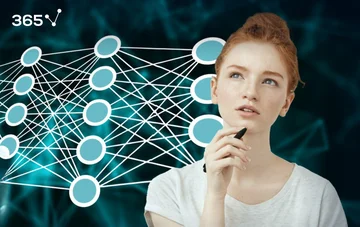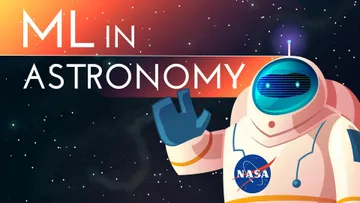One of the most significant developments in artificial intelligence has been its increasing accessibility to both professionals and newcomers. This is partly thanks to Hugging Face, which has emerged as an influential platform transforming how we approach AI and machine learning.
But what is Hugging Face, and why has it become such a crucial player in the AI community?
Hugging Face is a platform and community that serves as a social network for AI enthusiasts, researchers, and developers. It's often dubbed "the GitHub of Machine Learning" due to its focus on promoting open-source ML and AI development.
This article provides a comprehensive guide to Hugging Face—explaining the platform's key features and role as a hub for AI development. It also offers a short sentiment analysis tutorial, demonstrating just one use of the Hugging Face Transformers Library.
And if you’re more of a visual learner, here’s a short video briefly covering Hugging Face and its impact: watch here.
Now, let’s start answering the question: What is Hugging Face?
Table of Contents
- What Is Hugging Face Used For?
- How Does Hugging Face Work?
- What Are Hugging Face Transformers?
- Key Features of Hugging Face Transformers
- Is Hugging Face Open Source?
- Popular Use Cases for Hugging Face
- Hugging Face Tutorial: Sentiment Analysis
- Best Practices for Using Hugging Face
- The Future of Hugging Face
- Learning Hugging Face with 365 Data Science
- FAQs
What is Hugging Face Used For?

Hugging Face serves multiple purposes in the AI ecosystem. Users can:
- Discover and share cutting-edge AI models
- Collaborate with AI enthusiasts globally
- Access powerful tools for AI experimentation
- Share, use, and fine-tune ML models
- Host demos and evaluate ML models
How Does Hugging Face Work?

The platform democratizes AI access by providing pre-trained models that anyone can use. This is particularly significant because training state-of-the-art NLP transformer models typically requires substantial financial investment, making it impractical for startups and small businesses.
By offering freely available pre-trained models, organizations can develop proprietary AI solutions without incurring the massive expenses typically associated with training large language models from scratch.
For a deeper understanding of how Hugging Face works, take a look at our Intro to LLMs course taught by NLP expert Lauren Newbould, a data scientist at the BBC. The course covers Hugging Face and its cutting-edge AI Engineering tools.
What Are Hugging Face Transformers?

One of Hugging Face's most valuable offerings is its Transformers Python library. This powerful tool provides AI developers with easy access to pre-trained models through an API. The library also facilitates efficient creation of machine learning pipelines.
Key Features of Hugging Face Transformers
The Transformers library includes several important features:
- State-of-the-art Natural Language Processing models
- Support for PyTorch and TensorFlow frameworks
- Easy model fine-tuning capabilities
- Comprehensive documentation and examples
- Regular updates and community support
Is Hugging Face Open Source?

Hugging Face takes a unique approach to open-source development. While the platform strongly champions open-source AI and encourages collaboration among developers, it maintains a hybrid model.
The core infrastructure and some enterprise features remain proprietary, allowing Hugging Face to sustain its business operations. But the platform's most valuable assets—the vast collection of use-contributed models and datasets—are entirely open-source. This means anyone can freely access, use, and modify these resources for their own projects.
This balance between proprietary infrastructure and open-source content has helped Hugging Face create a sustainable ecosystem that benefits both the company and the broader AI community.
Popular Use Cases for Hugging Face
Organizations and developers use Hugging Face for various applications:
- Text Classification and Sentiment Analysis
- Named Entity Recognition (NER)
- Question Answering Systems
- Text Generation and Summarization
- Machine Translation
These applications demonstrate the versatility of Hugging Face's platform, making it a valuable resource for both research and commercial AI development projects.
Hugging Face Tutorial: Sentiment Analysis
To give you an idea of how it works, let's walk through a simple step-by-step tutorial on how to use Hugging Face for sentiment analysis (determining if text is positive or negative).
Step 1: Set Up Your Environment
First, you'll need to have Python installed on your computer. Then, open your terminal or command prompt and install the required package:
pip install transformers
Step 2: Create a New Python File
Open your favorite text editor or Python IDE and create a new file called 'sentiment_analysis.py'.
Step 3: Write the Code
Copy and paste this simple code into your file:
# Import the pipeline from transformers
from transformers import pipeline
# Create a sentiment analysis tool
analyzer = pipeline("sentiment-analysis")
# Try it with some example texts
texts = [
"I love this product!",
"This was a terrible experience.",
"The movie was okay, nothing special."
]
# Analyze each text
for text in texts:
result = analyzer(text)
print(f"\\nText: {text}")
print(f"Sentiment: {result[0]['label']}")
print(f"Confidence: {result[0]['score']:.4f}")
Step 4: Run Your Code
The next step in this Hugging Face tutorial is to save your file and run it from the terminal using:
python sentiment_analysis.py
Expected Output
You should see something like this:
Text: I love this product!
Sentiment: POSITIVE
Confidence: 0.9998
Text: This was a terrible experience.
Sentiment: NEGATIVE
Confidence: 0.9994
Text: The movie was okay, nothing special.
Sentiment: NEGATIVE
Confidence: 0.6547
Understanding What's Happening
- The 'pipeline' function from Hugging Face's Transformers library creates an easy-to-use tool for sentiment analysis
- When you first run the code, it automatically downloads a pre-trained model from Hugging Face's vast model repository
- Each text is analyzed using Hugging Face's pre-trained model and given a label (POSITIVE or NEGATIVE)
- The confidence score (between 0 and 1) shows how sure the model is about its prediction
This is just a basic example, but it shows how Hugging Face makes it incredibly simple to use AI models. Once you're comfortable with this, you can explore other tasks like translation, text generation, or question answering using similar patterns.
Best Practices for Using Hugging Face
To make the most of the platform, consider these recommendations:
- Start with pre-trained models before attempting custom training
- Explore the Hugging Face Transformers Library thoroughly—there’s lots to make use of
- Participate in the community discussions and forums
- Document your models and share your experiences
- Keep up with the latest updates and releases
- Contribute to open-source projects when possible
The Future of Hugging Face

Founded in 2016, Hugging Face has grown significantly and now boasts a valuation exceeding \$4.5 billion, demonstrating its substantial impact in the AI industry. The platform has benefited the AI landscape by creating a thriving ecosystem that makes artificial intelligence more accessible, collaborative, and innovative than ever before.
What does Hugging Face do for the AI community? It’s democratization of AI technology has made it possible for organizations of all sizes to leverage sophisticated machine learning capabilities without the traditional barriers to entry.
Looking ahead, we expect Hugging Face to further revolutionize AI development through enhanced enterprise solutions and deeper integration with emerging technologies.
Learning Hugging Face with 365 Data Science
To deepen your understanding of Hugging Face and its practical applications, 365 Data Science offers two valuable courses:
- Intro to LLMs
This comprehensive course covers creating AI applications, mastering AI Engineering skills, understanding LLM concepts, and working with OpenAI's API and LangChain. You’ll take a deeper look at what Hugging Face is and learn to leverage its extensive toolkit for building practical AI solutions.
- Introduction to Vector Databases with Pinecone
This hands-on course teaches you to work with vector databases, implement semantic search algorithms, and handle real-world data using the Hugging Face FineWeb dataset. You'll learn practical applications of embeddings and vectorization techniques while working with Pinecone AI.
Both courses provide structured, practical approaches to mastering Hugging Face and its integration with modern AI technologies.
We hope this comprehensive guide has helped answer the question “what is Hugging Face?” and explain how it's revolutionizing the AI development landscape. Hugging Face provides all the resources and community support needed to succeed in your AI journey, whether you're just starting to build ML models or you're a professional seeking additional tools and community.
Remember, 365 Data Science is here to support your ML and AI learning journey every step of the way—explore our expanding course library to see how you can join this exciting field.
FAQs







